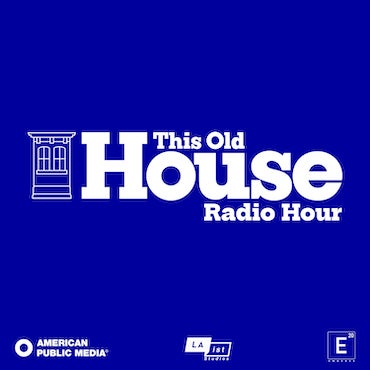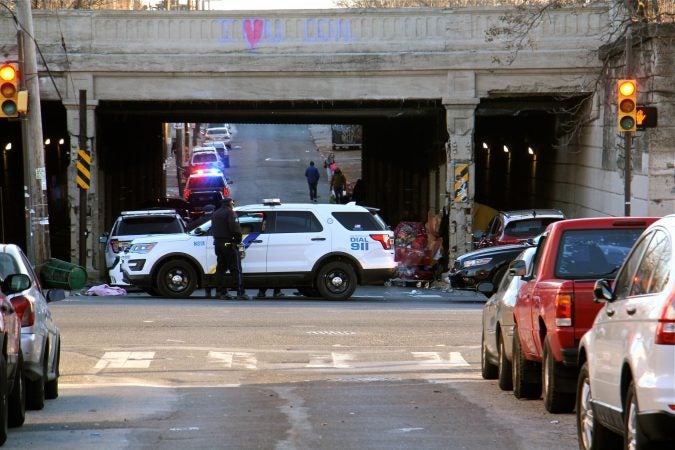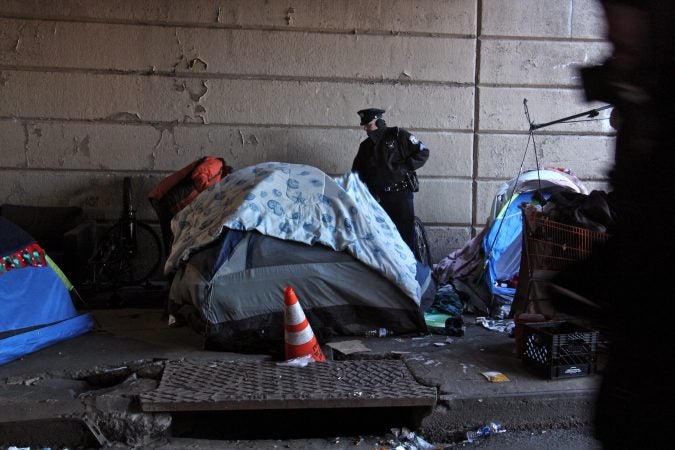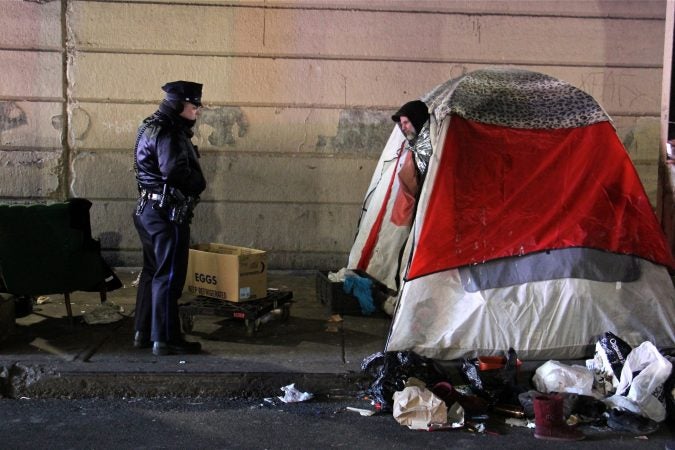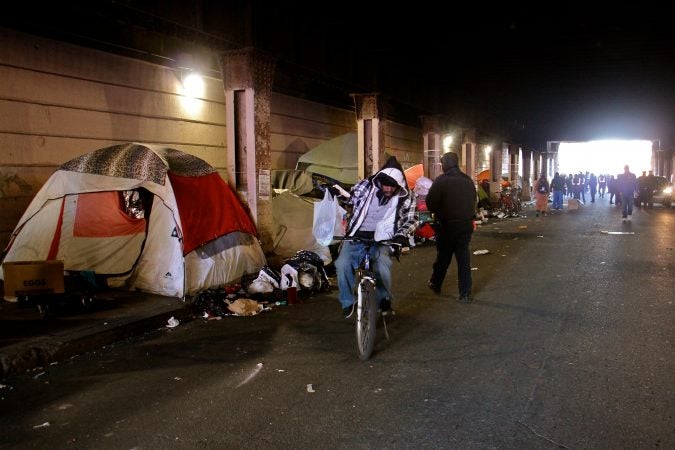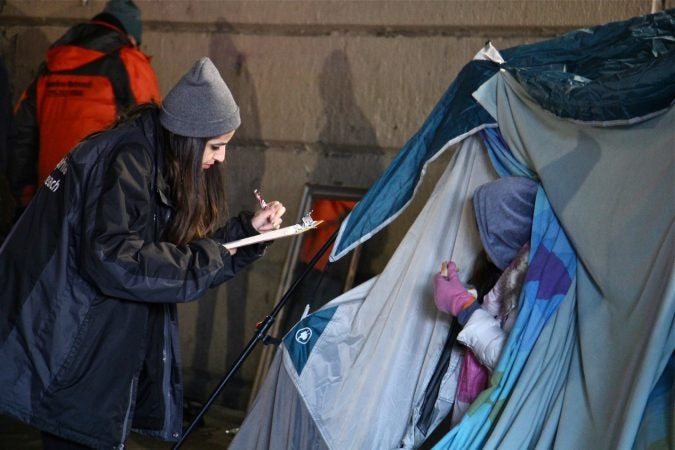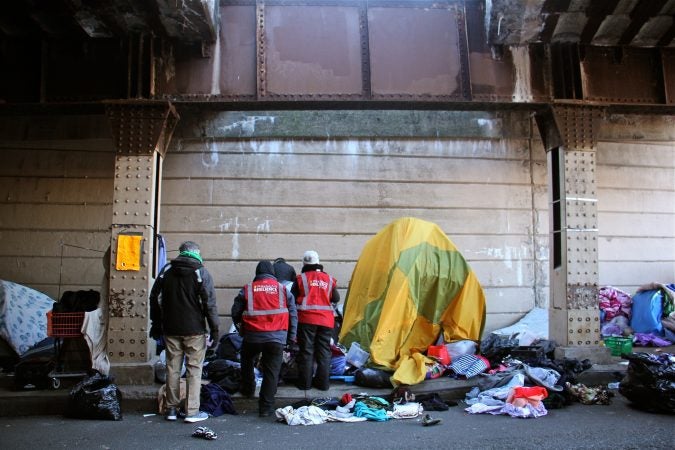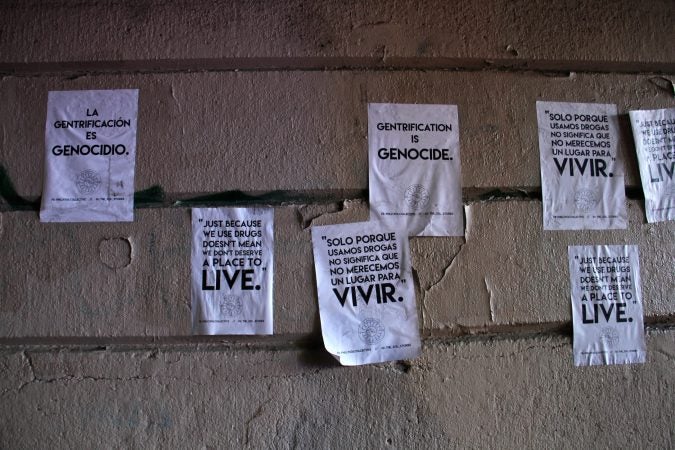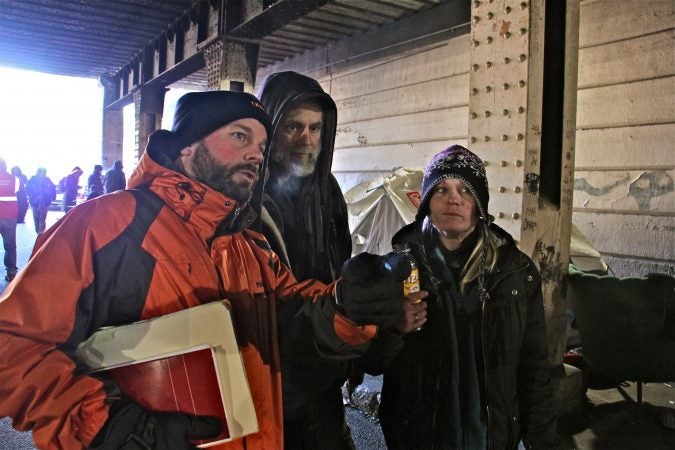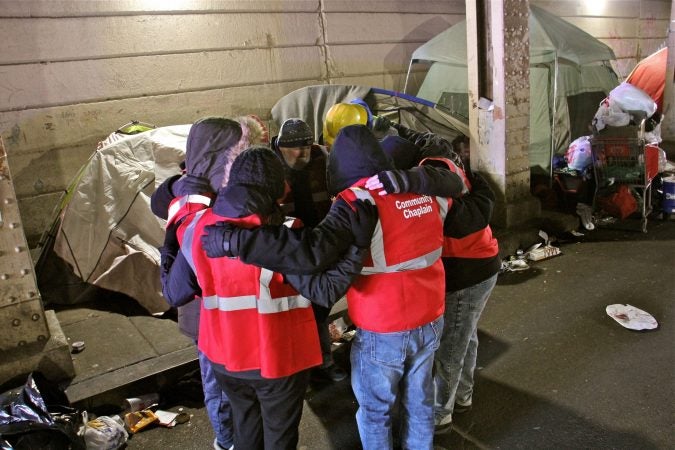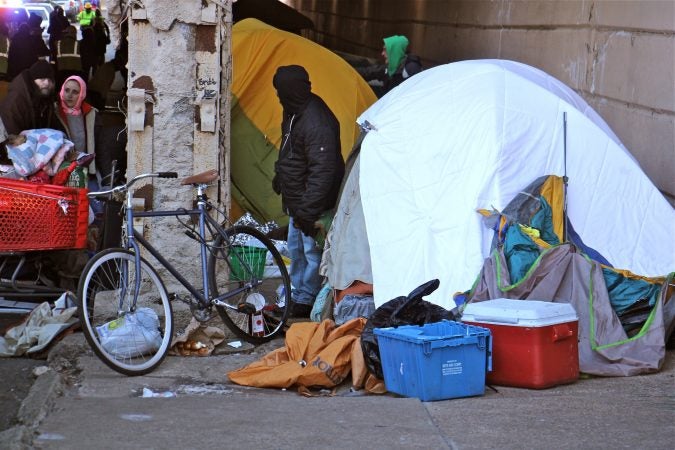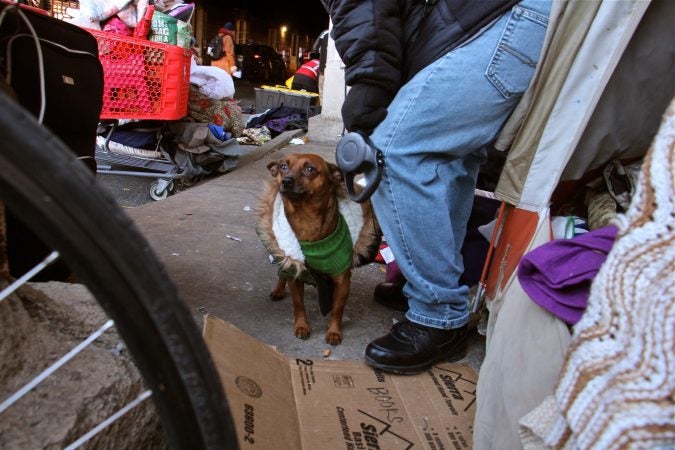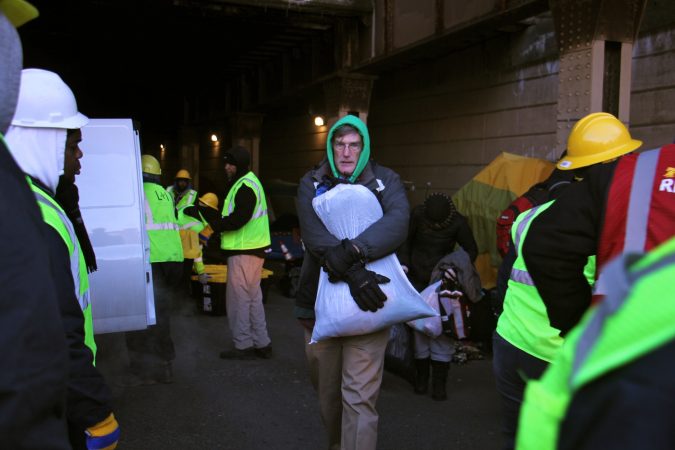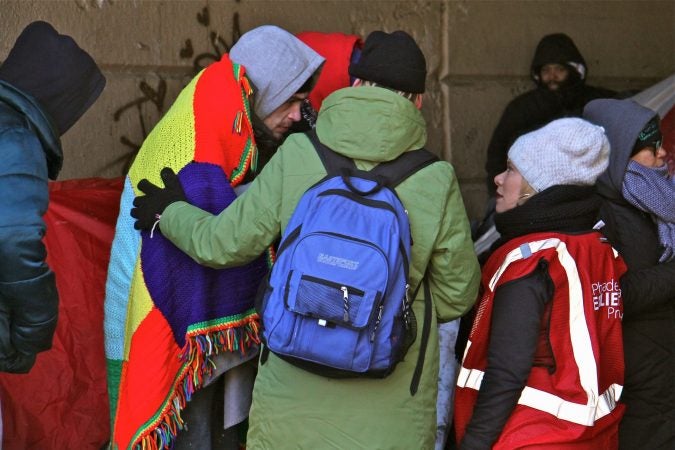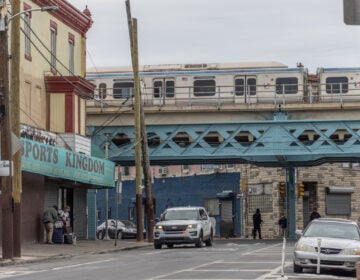Amid bitter cold, Philly closes last Kensington encampment
Philadelphia officials say they will provide housing to all homeless drug users cleared from a camp in Kensington Thursday. But most shelters are already full.
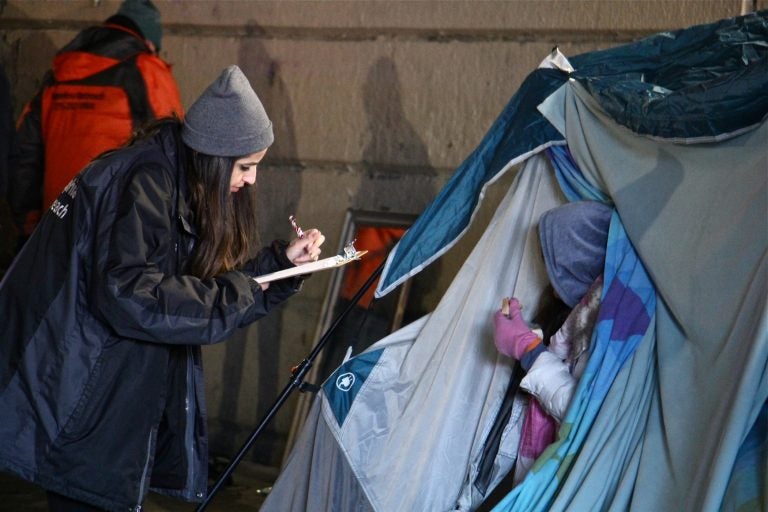
An outreach worker gets information from a woman living in a tent under the Emerald Street railroad overpass. (Emma Lee/WHYY)
Updated: Thursday, Jan. 31, 2018, 5 p.m. EST
—
Dante Jones used to be one of the dozens of people living in tents under the Emerald Street bridge in Philadelphia’s Kensington neighborhood. He got into a housing program in September, but just a few days ago, he was back trying to help the people still living there.
As he exchanged greetings with some of his old neighbors and handed out doses of Narcan, Jones asked people about where they were going to go Thursday, when the city planned to evict them.
“A lot of people seem really just dejected and kind of lost,” Jones said. “I just think a lot of people don’t really have a strong plan in place.”
The Emerald Street bridge area was home to Kensington’s last major encampment of many who are homeless and addicted to opioids. On Thursday morning, police and city workers broke down whatever was left of the camp, trying to place anyone still living there into a shelter or treatment program.
Local shelters for people in addiction are filled to capacity, but the city officials said they would find a place for anyone who had remained at the camp.
Jones was part of a volunteer group that did outreach at Emerald Street, but teams working for the city also had been coming daily to offer alternatives to life under the bridge. Jones began living there in July 2017, when there were only about half a dozen, he said. The population grew to more than 100 last summer, according to counts by the Philadelphia Police Department.
Now, Jones has his own apartment through Pathways to Housing PA, a program that provides permanent supportive housing for people dealing with opioid addiction. It’s one of the options the city offers to people living in the encampments as they are cleared.
The Emerald Street bridge was the oldest and largest of the four encampments that the city began clearing last year. The bridge had become notorious as a place where people openly sold and injected drugs, and neighborhood residents long demanded that the city intervene.
Liz Hersh, director of Philadelphia’s Office of Homeless Services, said the city refined its approach to helping people at the encampments with each closure. This time, she said, the city made more services available at the bridge itself, including treatment with the medication suboxone to stave off opioid withdrawal.
“It enables them to think a little bit more clearly,” Hersh said, and “make some decisions about where to go and what’s next.”
She hopes “what’s next” will be a housing or treatment program, or at least a bed in a navigation center — a temporary shelter serving people with addictions. But there are only two of these shelters in Kensington, and they’re both full, said Kate Perch, the director of homeless services for Prevention Point, which runs the shelters.
“That doesn’t mean that we don’t have vacancies at different times,” Perch said. “We’re consistently bringing in people from Emerald Street as beds become available, so we’re trying to never have an empty bed, especially with the weather as cold as it has been.”
Perch said about 25 people from the encampment had come in to Prevention Point’s shelters before Thursday’s clear-out.
Over the course of three hours Thursday morning, amid biting cold temperatures that dropped into single digits, the city cleared the encampment on schedule. There were still about 25 tents standing under the bridge, and police counted about 45 people who had spent Wednesday night there. Outreach workers in orange jackets hurried back and forth between the final holdouts to coordinate last-minute plans to enter shelters or treatment programs. Meanwhile, other city workers patiently helped them pack up their belongings, distributing large plastic chests to use for storage.
Dozens of police officers were there supporting the effort, as well as advocates for people in addiction, chaplains, and a group of nurses from Temple University Hospital handing out care packages.
Philadelphia Managing Director Brian Abernathy said the cold weather might have worked in the city’s favor.
“I think it did help to convince some people to come in,” he said. “It’s miserable out there.”
Hersh said that by the time the camp was cleared, 43 of the 67 people on outreach workers’ list of those who had been living at Emerald Street had moved into shelters or treatment programs. She said she expects even more to accept help as outreach teams and case managers continue to engage with people they’ve made contact with.
“The encampment resolution process is a beginning, not an end,” Hersh said.
WHYY is your source for fact-based, in-depth journalism and information. As a nonprofit organization, we rely on financial support from readers like you. Please give today.

